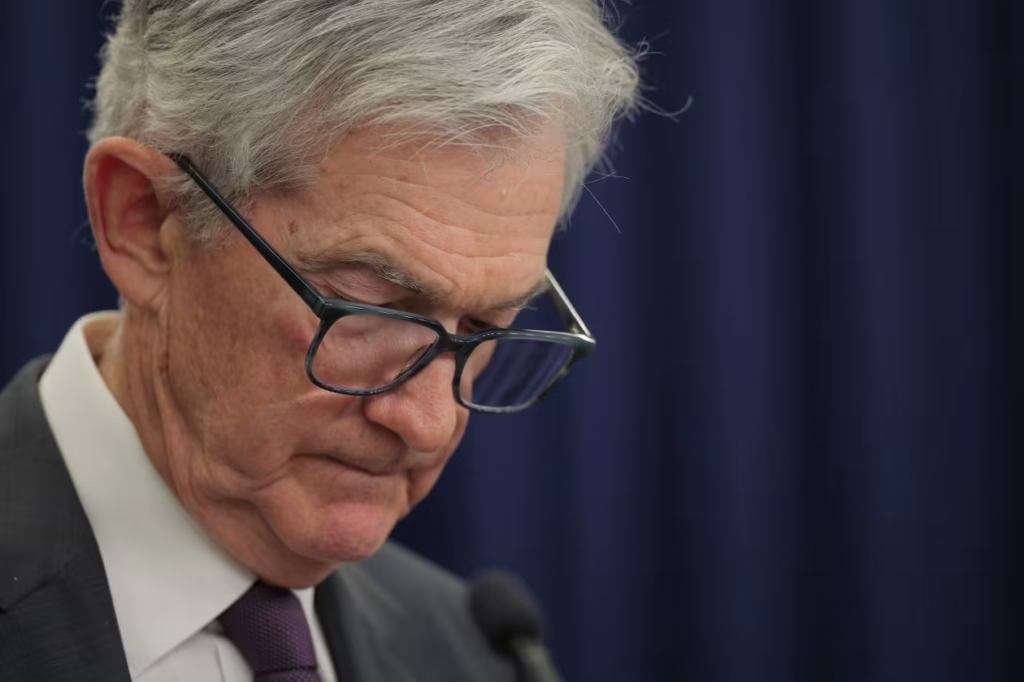President Donald Trump has consistently criticized Federal Reserve Chair Jerome Powell for lowering interest rates.
Experts predict that Fed Chair Jerome Powell will need to rally a narrow majority of his colleagues to back a 25 basis point interest rate cut on Wednesday due to mounting concerns about the state of the economy. However, the more important question surrounding the meeting is what will happen next, given the central bank’s upheaval and the uncertainties surrounding the future of inflation and the labor market.
Powell is probably going to encounter an unprecedented degree of internal resistance. Due to the deteriorating labor market, some of his colleagues have indicated that they would want to see a greater rate cut. Recent weak inflation data may lead some to choose no change in rates. There is a chance that both sides will formally disagree.
There is still uncertainty even about the fundamental question of who will be attending the meeting. In order to attend, President Donald Trump’s nominee for the Fed board, Stephen Miran, must first be confirmed by Congress. In the meantime, the White House has requested permission from a federal appeals court to proceed with its contentious plan to fire Fed Governor Lisa Cook in order to prevent her from going to the meeting.
The economy has slowed and inflation has increased as a result of the White House’s policy of imposing tariffs on imported goods. However, there are indications that the labor market is cooling. Powell and his colleagues are faced with a problem in this stagflation-lite climate. Cutting interest rates, which they use to boost the labor market, can also increase inflation.
There is disagreement among Fed officials regarding the central bank’s course of action. A higher rate of inflation worries some people. Others are concentrating on preventing a potential recession.
Possibility of historically high dissent levels
According to Matt Luzzetti, chief economist at Deutsche Bank, this might be the first meeting with disagreement “on both sides” since September 2019 and the first time three governors had disagreed since 1988, depending on the conclusion. Dissent on both sides can be interpreted in two ways.
The head of global macroeconomics at Northern Trust Asset Management and a former Powell top adviser, Antulio Bomfim, believes there won’t be much dissent. He pointed out that there might be a desire to shield the Fed from the attacks on the White House.
“External pressures will bring about people coalescing around the institution,” Bomfim stated.
According to Vincent Reinhart, a former Fed employee and current chief economist at BNY Investments, Powell’s likely answer to the commotion will be to make a minor cut and move aside. Reinhart went on to say that he anticipates Powell will encourage dissenters to voice their opinions by collecting their forecasts of where rates should go in a document known as the dot plot.
Powell will have to weigh a variety of opinions in the future.
Rates will be decided by the Fed’s interest-rate committee, which meets Tuesday and Wednesday. Powell will conduct a press conference half an hour after the meeting concludes at 2 p.m. Eastern on Wednesday.
Powell’s handling of the crisis will be widely watched by economists as it may give clues about the central bank’s future interest rate-setting strategy.
According to Bomfim, Powell is probably going to exercise caution and resist the market’s expectation that the Fed will lower interest rates at its upcoming meeting in October.
“I don’t believe it is very certain that they will make another cut in October. Bomfim stated, “You have significant upside risks to inflation.” “The labor market is not falling out of bed and screaming for cuts.” The next rate drop, according to Bomfim, will occur in December.
Powell is expected to announce three quarter-point reduction this year, in September, October, and December, according to Luzzetti.
According to Luzzetti, the Fed’s intention to prevent significant labor market weakness will drive the gradual reductions. Luzzetti stated that the Fed’s rate decreases will assist guarantee that the economy continues to grow and that a recession is not his base case.
According to Luzzetti, two elements bolstering the economy in the second half of this year are company investment and consumer demand.
There is no chance of a half-point rate drop on Wednesday, according to economists. The odds of a bigger shift are only 10%, according to financial market traders.
There is scant support for a big move, even among Citi analysts who believe the Fed will reduce aggressively.
Last September, the Fed shocked everyone by cutting interest rates by 50 basis points.
In a note to clients, Citi chief U.S. economist Andrew Hollenhorst stated, “Compared to last September, rates are closer to neutral, and Fed officials see more upside risk to inflation than last year.”





